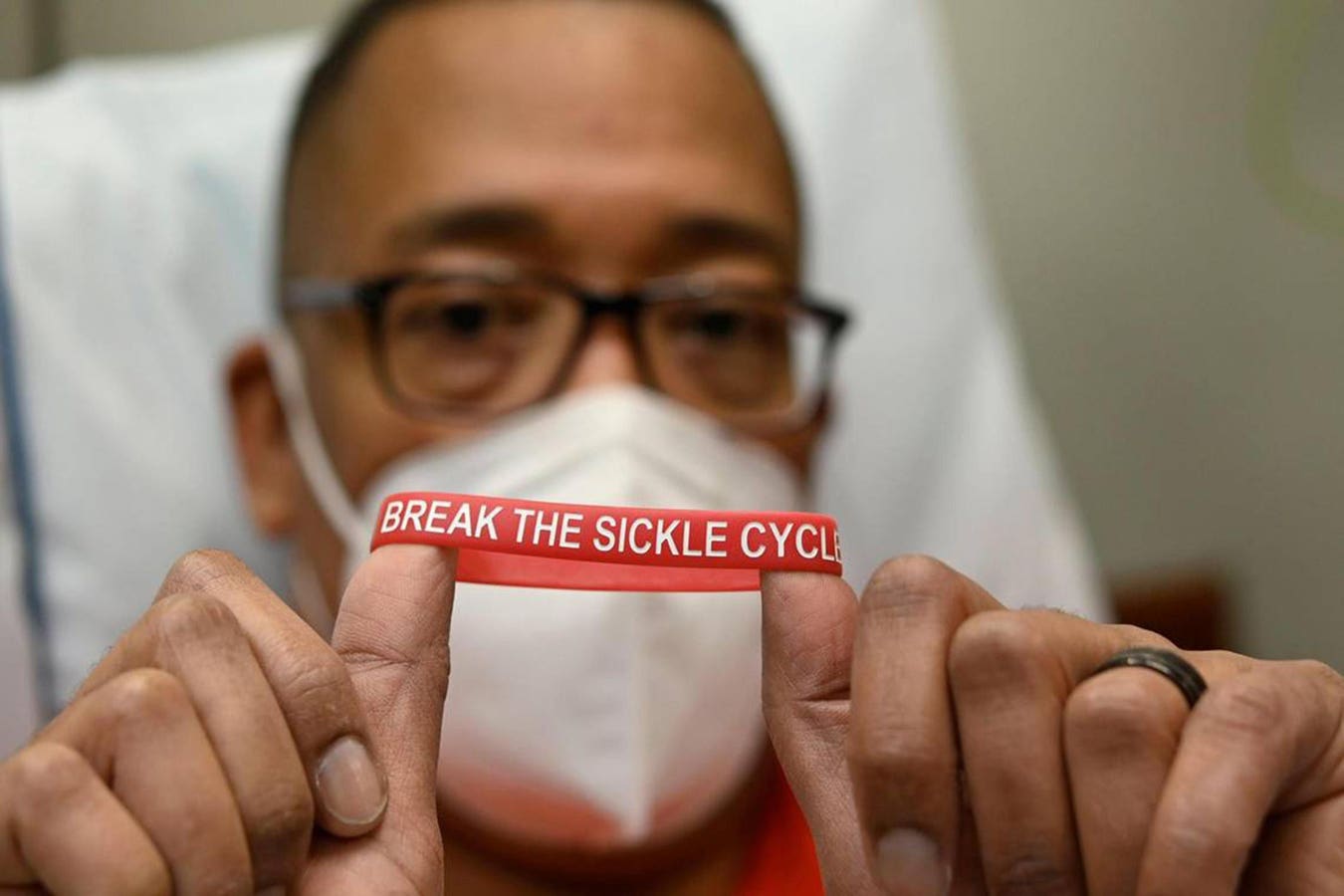Health
What new gene therapy means for sickle cell patients

Kevin Wake wears a sickle cell awareness bracelet. He was treated in the hospital emergency room … [+]
Recently a 12 year old boy became the first patient with sickle cell disease to begin commercially approved gene therapy that could potentially cure the condition.
The genetic disease affects millions of people worldwide and at least 100,000 Americans, according to CDC. Patients with sickle cell disease inherit a mutation in the gene responsible for the production of hemoglobin, the protein that carries oxygen in red blood cells. The condition results in the production of abnormal hemoglobin, which causes normal spherical red blood cells to become crescent-shaped, preventing them from flowing smoothly through the bloodstream. Consequently, patients with the disease can experience severe pain, organ damage, and many debilitating complications.
The promise of gene therapy offers hope for a cure for the disease and offers patients the opportunity for a normal life. The therapy involves removing a patient’s bone marrow stem cells, which are precursors for an individual’s red and white blood cells in the body. The stem cells are then sent to a laboratory where a healthy hemoglobin gene is incorporated into the stem cells to correct the patient’s hereditary mutation. The modified stem cells are then returned and transplanted into the patient.
This therapy could be a huge game changer for patients struggling with sickle cell disease due to all the complications that can arise with the condition. Sickle-shaped red blood cells can block the supply of blood and oxygen to major organs and structures, resulting in a wide range of symptoms and severe body pain. For example, a lack of blood supply to the bone can lead to death down to the bone, a condition called avascular necrosis. The bone and a possible joint such as the hip can collapse, leading to debilitating pain, early arthritis and a limp.
If the sickle cells block blood flow to the brain, patients may have a stroke and present with confusion, sudden numbness and weakness on one side of the body, and difficulty speaking or understanding speech. About 10% of children with sickle cell disease will have a stroke with the above symptoms, according to the American newspaper CDC.
Although gene therapy addresses the root cause of the problem faced by patients with sickle cell disease, it is not without its problems. The potential drug will cost the 12-year-old boy who receives it more than $3 million The New York Times. Although insurance will cover his gene therapy, it remains to be seen whether insurance companies will pick up the bill for other sickle cell patients who qualify for gene therapy in the near future.
The majority of sickle cell patients are Medicaid beneficiaries, and fewer than 70% of U.S. physicians are accepting new Medicaid patients, according to the CDC Foundation. This highlights the inherent disparities in access to care, as Medicaid is a government program that provides health insurance to people with low incomes and limited resources. Additionally, Medicaid limits access to specialty health care, such as research has shown that significantly fewer patients with Medicaid visit a hematologist or a physician who specializes in treating blood disorders compared to patients who have commercial insurance. Without specialized care from experts trained in the treatment of sickle cell disease, patients will not receive the treatment they need to effectively manage their disease.
There is no doubt that emerging gene therapies offer a glimmer of hope and light for the many who suffer from sickle cell disease. The new therapy also opens the door to problems that could further widen the disparity among sickle cell patients.













